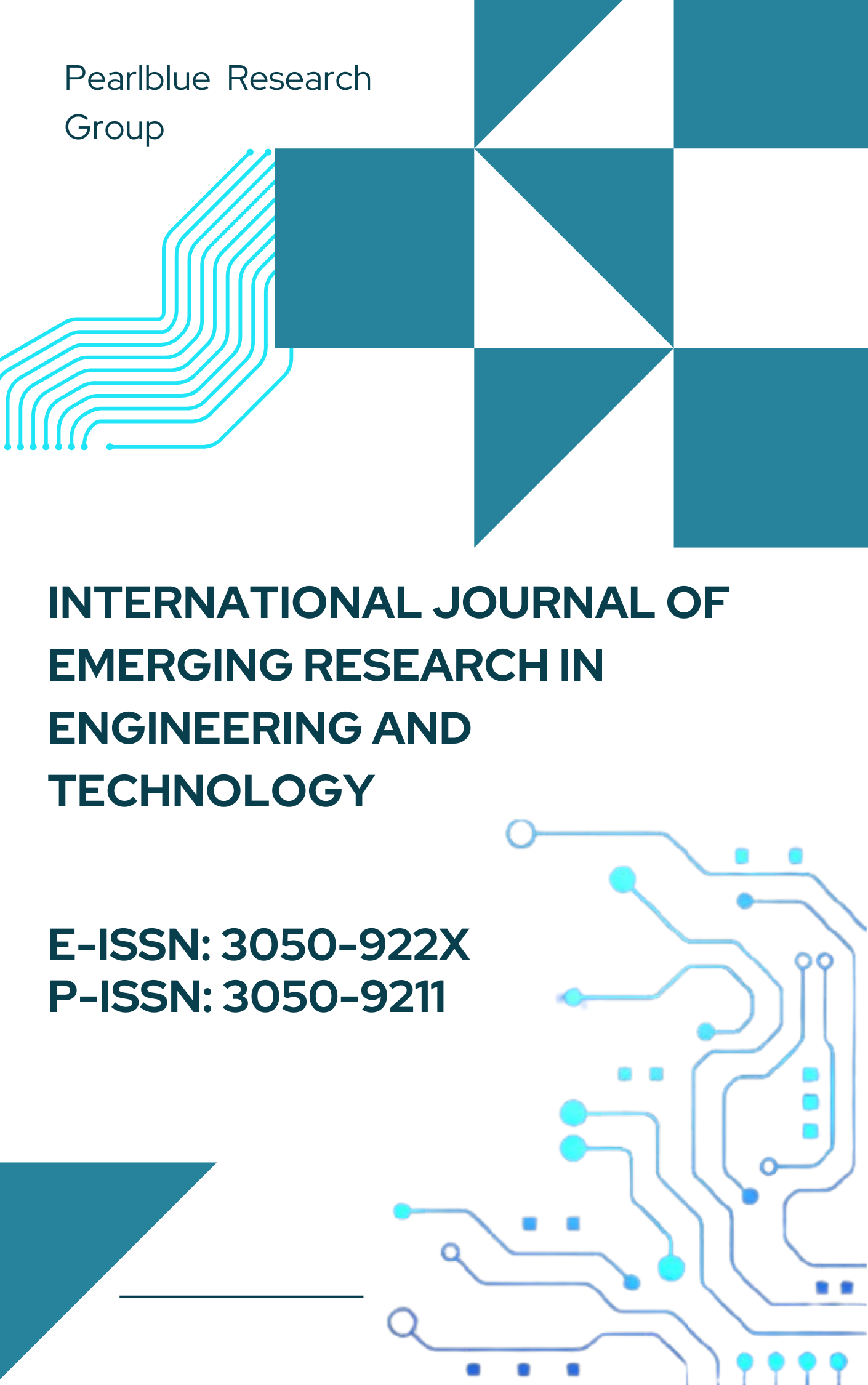Edge-Enabled Distributed Computing for Low-Latency IoT Applications: Architectures, Challenges, and Future Directions
DOI:
https://doi.org/10.63282/3050-922X.IJERET-V3I1P104Keywords:
Edge computing, distributed computing, Fog computing, Multi-Access Edge Computing (MEC), Federated learningAbstract
IoT technology has been experiencing exponential growth, and to mitigate issues of latency, bandwidth, as well as real-time data processing, edge-enabled distributed computing has been enhanced. Existing approaches to cloud computing are not suitable for satisfying the real-time demands of a number of context-aware IoT applications like smart cities, self-driving cars, industrial controls or health monitoring systems. Fog computing, together with edge computing and Multi-access Edge computing, also helps in performing computation close to the data or at the edge source thereby providing less latency and better performance. Thus, speaking about the basic and peculiarities of edging computing and its distribution, the paper focuses on the comparison of the centralized, distributed, cloud-edge, and tiered approaches. Furthermore, specific issues, including scalability, real-time processing, security, heterogeneity, data consistency, and energy consumption, are introduced and explained to note the difficulty of Large-scale edge-IoT system implementation. Widespread technologies such as 5G are examined, as well as other tendencies connected with AI-driven edge computing, blockchain security, federated learning, and digital twins as possible solutions to these challenges and increase edge intelligence. Moreover, there is a real-time case of smart city traffic management that shows that multi-layer edge architecture helps minimize latency and maximize traffic utilization. Last of all, the paper suggests potential research domains for further research, including future edge architecture, self-organizing networks, edge-aware application development, green edge computing and integration of edge computing with quantum computing. These developments will have a significant role in defining the future of low-latency efficient edge-IoT networks, plant performance, security and scalability in various applications
References
[1] Khan, L. U., Yaqoob, I., Tran, N. H., Kazmi, S. A., Dang, T. N., & Hong, C. S. (2020). Edge-computing-enabled smart cities: A comprehensive survey. IEEE Internet of Things Journal, 7(10), 10200-10232.
[2] Ray, P. P., Dash, D., & De, D. (2019). Edge computing for Internet of Things: A survey, e-healthcare case study and future direction. Journal of Network and Computer Applications, 140, 1-22.
[3] IoT Edge Computing, phoenixnap, online. https://phoenixnap.com/blog/iot-edge-computing
[4] What’s IoT edge computing: examples, benefits, and prospects for reducing costs online. https://yalantis.com/blog/edge-computing-in-iot/
[5] Buyya, R., & Srirama, S. N. (Eds.). (2019). Fog and edge computing: principles and paradigms. John Wiley & Sons.
[6] Abolhassani Khajeh, S., Saberikamarposhti, M., & Rahmani, A. M. (2022). Real-time scheduling in IoT applications: a systematic review. Sensors, 23(1), 232.
[7] Xu, R., Hang, L., Jin, W., & Kim, D. (2021, August). Distributed secure edge computing architecture based on blockchain for real-time data integrity in IoT environments. In Actuators (Vol. 10, No. 8, p. 197). MDPI.
[8] Centralized vs Distributed System, geeks for geeks, online. https://www.geeksforgeeks.org/centralized-vs-distributed-system/
[9] Anina Ot, How Internet of Things (IoT) Edge Computing is Used by Volkswagen Group, Bharat Light & Power, Eneco, SISAG, and Deep Sky Vineyard: Case Studies, Datamation, 2021. online. https://www.datamation.com/applications/internet-of-things-iot-edge-computing-use-cases/
[10] What is IoT Edge computing?, Redhat, 2022. online. https://www.redhat.com/en/topics/edge-computing/iot-edge-computing-need-to-work-together
[11] IoT and Edge computing: Requirements, benefits and use cases, Stl partners, online. https://stlpartners.com/articles/edge-computing/iot-edge-computing/
[12] Douch, S., Abid, M. R., Zine-Dine, K., Bouzidi, D., & Benhaddou, D. (2022). Edge computing technology enablers: A systematic lecture study. IEEE Access, 10, 69264-69302.
[13] Filali, A., Abouaomar, A., Cherkaoui, S., Kobbane, A., & Guizani, M. (2020). Multi-access edge computing: A survey. IEEE Access, 8, 197017-197046.
[14] Tanaka, H., Yoshida, M., Mori, K., & Takahashi, N. (2018). Multi-access edge computing: A survey. Journal of Information Processing, 26, 87-97.
[15] Towards Mobile Edge Computing Architecture for Low-latency Applications, https://www.researchgate.net/figure/General-MEC-Architecture_fig1_336317665 - fig.3
[16] Hamdan, S., Ayyash, M., & Almajali, S. (2020). Edge-computing architectures for Internet of things applications: A survey. Sensors, 20(22), 6441.
[17] Edge computing and IoT: How they fit together, enterprise project, 2021. online. https://enterprisersproject.com/article/2021/3/how-edge-computing-and-iot-fit-together
[18] Premsankar, G., Di Francesco, M., & Taleb, T. (2018). Edge computing for the Internet of Things: A case study. IEEE Internet of Things Journal, 5(2), 1275-1284.
[19] Alwarafy, A., Al-Thelaya, K. A., Abdallah, M., Schneider, J., & Hamdi, M. (2020). A survey on security and privacy issues in edge-computing-assisted internet of things. IEEE Internet of Things Journal, 8(6), 4004-4022.
[20] He, P., Zhang, S., Zhao, L., & Shen, X. (2018). Energy-efficient power allocation with individual and sum power constraints. IEEE Transactions on Wireless Communications, 17(8), 5353-5366.
[21] Zhang, J., Xiang, L., Ng, D. W. K., Jo, M., & Chen, M. (2017). Energy efficiency evaluation of multi-tier cellular uplink transmission under maximum power constraint. IEEE Transactions on Wireless Communications, 16(11), 7092-7107.



